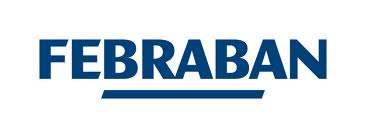FEBRABAN

Banks use the FEBRABAN 240 file format to digitally exchange information with its clients for a variety of products and services. These files have a fixed format text with columns defined by FEBRABAN. Each bank has its own variations within the standard. The FEBRABAN format differs for various products and services. The standard presents in detail each product/service available and the context in which they occur, identifying entities origin and destination of each flow of information exchange.
- Payments – Conceptualizes the product/service Payments by defining the goal of the entities involved and the flow of information exchange, and presents the layout of the records/segments in implementation. This type of service/product enables the payment of wages, suppliers, dividends, etc., through credit account, check, OP, DOC, payment authentication bond payment or collection of taxes.
- Collection – Conceptualizes the service/product collection by setting the goal of the entities involved and information flow, and presents the layout of the records/segments to be used in its implementation. This type of service/product enables the generation of information and securities charges for the Transferor Bank (entry titles, request to terminate, etc.), the generation of information the electronic bloqueto (captured titles in the portfolio) and the Withdrawn claims of the Bank Transferor.
- Current Account Statement to Bank Reconciliation – Conceptualizes the service/product of Current Account Statement to Bank Reconciliation through defining the purpose, the entities involved and the flow of information, and displays the layout of records/segments to be used in its implementation. This type of service/product enables generating current account statement for bank reconciliation, considering only the accounting balances of the current account.
- Current Account Debit – Conceptualizes the service/product Debit Current Account by defining the objective; entities involved and the flow of information, and presents the layout of the records/segments to be used in its implementation. This type of service/product enables the payment of installments, contributions and other types of commitments or charges, by direct debit.
- Vendor – Conceptualizes the product/service vendor by defining the goal of the entities involved and information flow, and presents the layout of the records/segments to be used in its implementation. This type of service/product provides financing through the Bank assignor.
- Check Custody – Conceptualizes the product/service check custody by defining the goal of the entities involved and the flow of information, and presents the layout of the records/segments to be used in its implementation. This type of service/product gives customers the custody of checks and compensation determined at the date thereof (Deposit Date).
- Extract to Cash Management – Conceptualizes the service/product to Extract Cash Management by defining the objective; entities involved and the flow of information, and presents the layout of the records/segments to be used in its implementation. This type of service/product enables the generation of extracts for Cash Management, generated several times a day, with information on balances and releases of different natures.
- Loan for Consignment – Conceptualizes the service/product by Consignment Loan through the goal setting, the entities involved and the flow of information, and presents the layout of the records/segments to be used in its implementation. This type of service/product to the employees/beneficiaries companies and public bodies performing loans through consignment in payroll/benefit.
- Purchasing – Conceptualizes the service/product Compror through goal setting, the entities involved and information flow, and presents the layout of the records / segments to be used in your implementation.
Need any help?
One of our Corporate-to-Bank experts would be happy to answer any questions you have.
Simply Ask a C2B expert »
